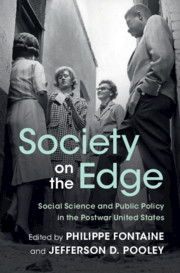9 - Mental Illness
Published online by Cambridge University Press: 28 November 2020
Summary
Chapter 9 traces the relatively light pre-World War II engagement with mental health issues, with the partial exception of sociology. The postwar expansion of federal research funding, paired with explosive treatment demand for returning veterans, transformed psychology, swelling its ranks with clinicians. Federal largesse underwrote a surprisingly diverse range of projects, with psychologists, psychiatrists, and, to a lesser degree, sociologists as the main beneficiaries. As psychology swelled under its postwar “scientist-practitioner” settlement, sociology remained comparatively small and, by the 1960s, increasingly critical of psychiatry and the country's mental health institutions. Meanwhile, psychiatry had rapidly shed its psychoanalytic character by the 1980s, a response to dried-up funding and the psychopharmacological revolution. The chapter addresses the relative neglect of mental health by economists, up through the 1990s-even as the discipline marched its toolkit through many other social problem domains. The explanation for the anomaly is that mental health, in all its stigmatized irrationality, was a step too far for a discipline committed to the everyday fact, and scholarly application, of reason. With its tight discipline and established policy sway, economists had “no need to chase after scraps from the table served up by NIMH.”
Keywords
- Type
- Chapter
- Information
- Society on the EdgeSocial Science and Public Policy in the Postwar United States, pp. 322 - 357Publisher: Cambridge University PressPrint publication year: 2020

